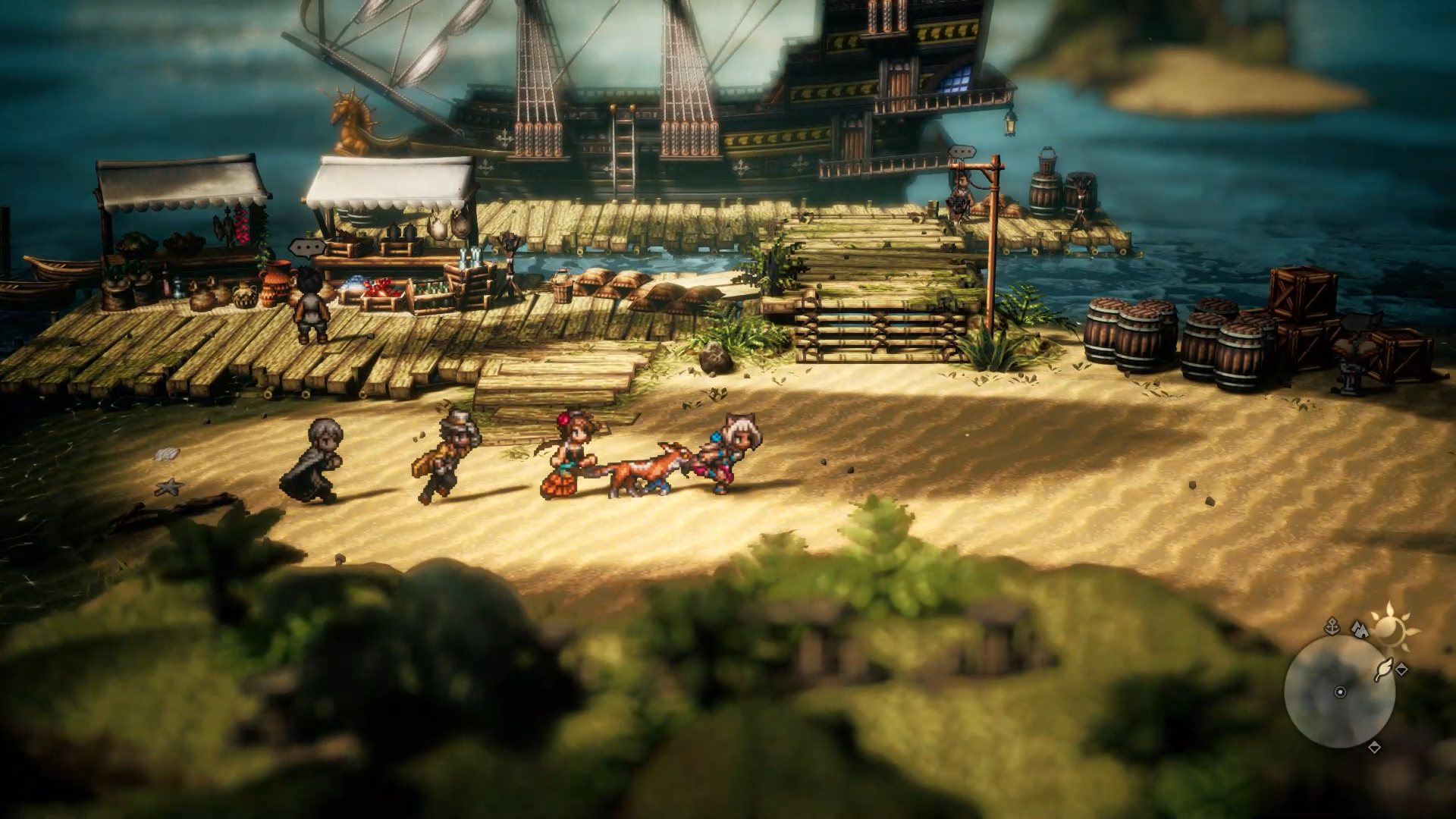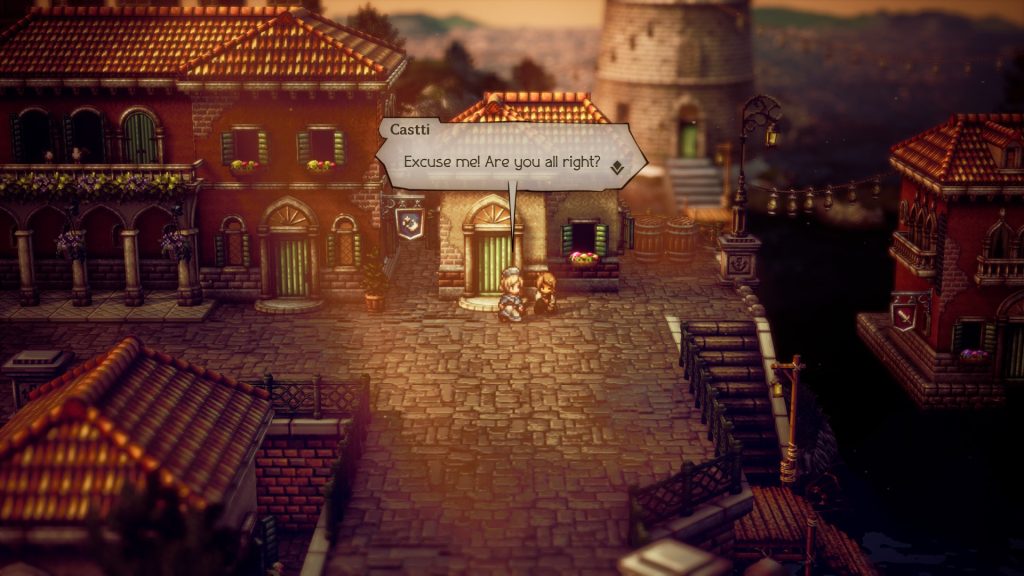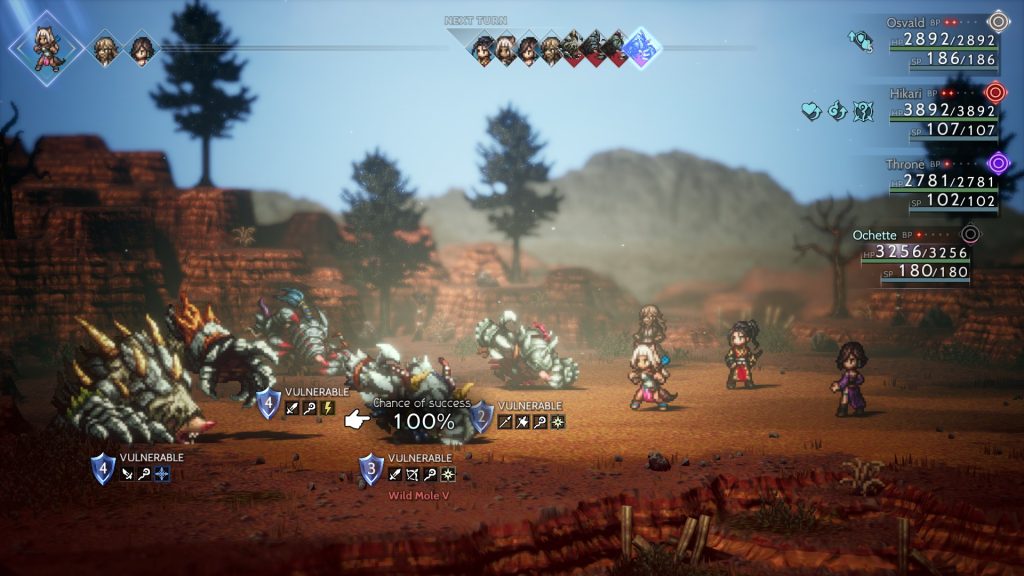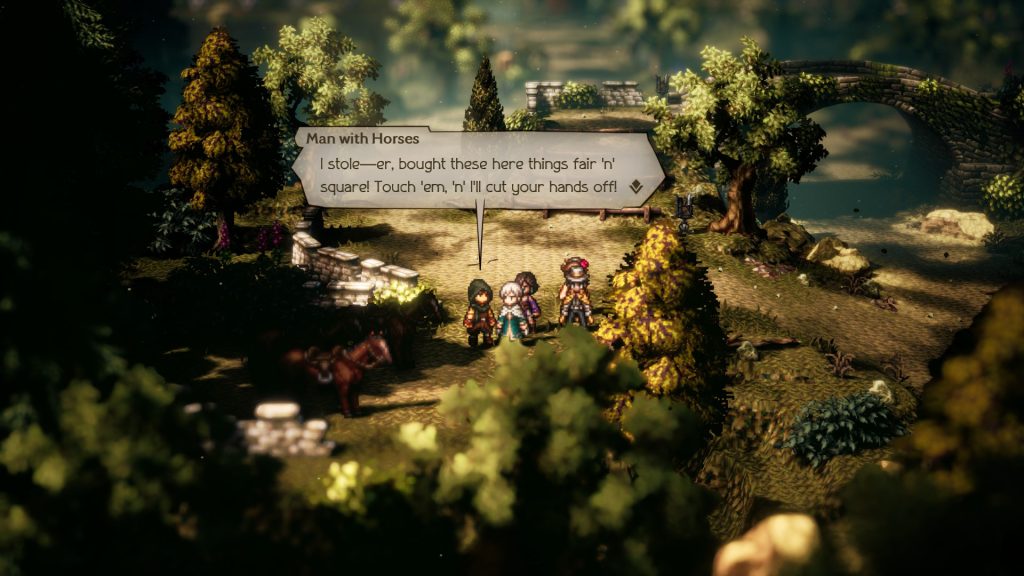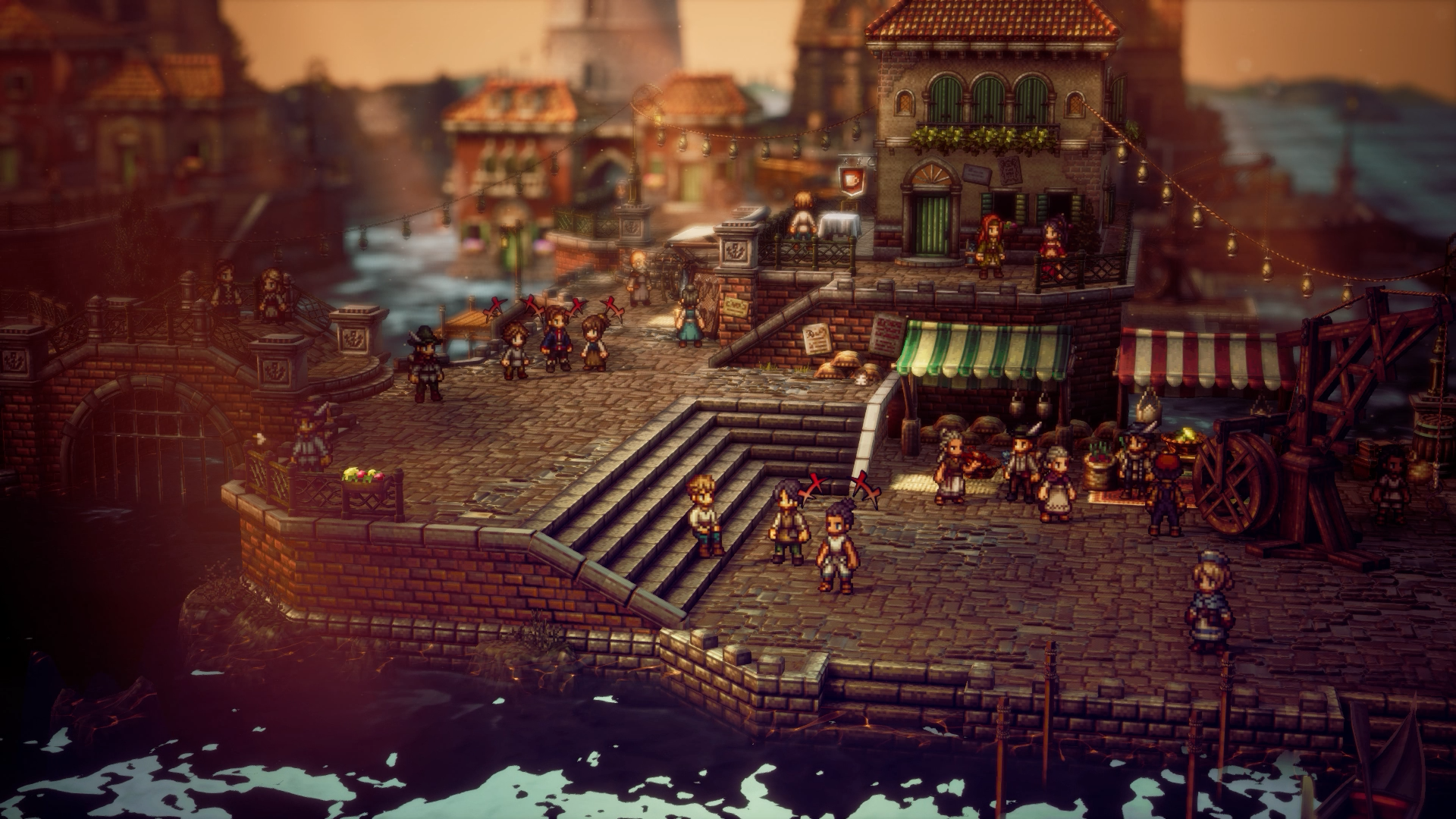Octopath Traveler II is a turn-based RPG co-developed by Square Enix and Acquire. Utilising the HD-2D style ala last year’s Live A Live, Octopath Traveler II is a gorgeous, nostalgic adventure with endearing characters, a tangible world, and challenging combat. The first game stopped short of being great, due to repetitive gameplay and a lack of cohesion, so how does the sequel improve upon its predecessor?
To those new to the premise of these games, the title refers to there being eight characters each with their own unique storyline and class (or jobs as they’re called here). You pick one to start with, then as you travel the world you gradually add all eight to your party. When you come across a new character for the first time you can choose to go back and experience their first chapter or save it for later on.
It’s probably worth mentioning that Octopath Traveler II is set in an entirely different place with an entirely different cast of characters, so knowledge of the first game is not at all required to play and enjoy this sequel.
Due to the game’s central mechanic, it’s somewhat difficult to provide an overall premise for the story as it varies so much. Some characters star in very archetypal tales like that of Osvald, the magic-wielding scholar seeking revenge on the man responsible for murdering his family. Or the exiled prince Hikari, who must win back the throne from his warmongering brother. But then you also have stories like Agnea’s, a dancer from a rural town who wants to become a superstar performer like her mum. Or Partitio, a merchant who wants to cure the world of poverty.
The formula of the first game is still largely intact. Each region of the map features sequential areas with gradually increasing level requirements. With a few exceptions, there’s a new town and dungeon to explore for each chapter of each character. In the original game, this structure was extremely transparent and quickly became tedious as a result. This sequel does a much, much better job of obfuscating this. The towns are far more unique, with distinct visual styles, and interesting layouts and they fit far better contextually within the world.
New Delsta for example is a glitzy, modern metropolis with paved streets, concert halls, and 1920s-style townhouses. The city is referenced by other characters, both NPCs and those within your party, as being a bustling cultural hub. This applies to many other locations in the game, whether it’s the grand libraries of Montwise or the floating theatre of Tropu’hopu. The sense that the towns and cities of this fictional world have an identity is something that was sorely missing from the first game, and that is very welcome here.
Similarly improved are the opportunities for your party to interact with each other. In the first game, each character was entirely siloed off, despite traveling the world together. In Octopath II, the characters can engage in ‘party banter’ which are short, one-on-one conversations (without voice acting) between two members of your party. These conversations refer to events happening in the main story and are simple but have an enormous impact.
Even better are the new Crossed Paths. These are side quests with multiple stages that two characters from your party tackle together, complete with voice acting. Again, these are short and sweet, but invaluable in terms of what they add to the overall sense of having a party that is traveling the world together.
Taken as a whole, the story is the very definition of a slow burn. Due to the way the character system is structured, the opening hours of the game can feel a little stop-start, as you are constantly ‘starting again’ with each character’s first chapter. Technically you don’t have to do their first chapter right away, but you will need to do it at some point to continue on to the rest of their story.
As I started progressing into the second and third chapters for each character, the narrative, characters, and world really started coming into their own. It’s not that I had a bad time early on, it’s just that I didn’t start having a fantastic time until close to 15 hours in. I found myself invested in all eight character’s stories, the twists, the villains, all of it. The developers absolutely deserve praise here as it was the single biggest problem I had with the original: I just didn’t care.
In combat, you control up to four party members at a time, each with their own weapon skills, elemental spells, and other abilities depending on their job type. One of the unique aspects of Octopath Traveler’s combat system is the “Boost” mechanic. Players can accumulate Boost Points (BP) by defending, attacking, or using skills in battles. These points can then be spent to enhance attacks or skills, increasing their potency or affecting the number of hits or targets.
You can also exploit enemy weaknesses by using attacks or skills that correspond to the relevant element or weapon type. Doing so deplenishes their Shield Points, which upon reaching zero will break the enemy, leaving them stunned, interrupting their next action, and making them vulnerable for a time.
This system keeps things somewhat interesting and requires a little more strategy than your average turn-based RPG. Do you use Ochette’s accumulated BP to shatter the target’s Shield Points with a rain of arrows? Or do you weather the incoming attack so that another party member can break them, using Ochette’s BP to instead unleash a devastating attack once the enemy is vulnerable?
Then there are the new Latent Powers, which accumulate over the course of a fight and are unique to each character. Some are as simple as concentrating a spell that normally hits multiple targets into a more powerful but single-target attack. Others are more contextual for the character like Hikari’s mysterious Shadow’s Hold subset of abilities. These Latent Powers are nothing groundbreaking but are a welcome addition to your strategic toolkit.
Most, but not all, of a character’s chapters end with a boss fight. They’re manageable, to begin with, but as you move into a character’s third chapter they start to get more challenging. Thankfully, if I ever felt in over my head, I went away, leveled up my party once or twice (which doesn’t take very long), bought some better gear, maybe tweaked some secondary jobs, then went back in and in most cases found success. The line between a decent challenge and causing frustration is a fine one in games like this, but Octopath Traveler II walks it well.
The soundtrack was perhaps the only truly outstanding aspect of the first game and the sequel doesn’t disappoint in this regard either. It may lack a certain something the original brought to the table, but the individual themes for characters, towns, and battles, as well as all their variants, have great instrumentation and add a lot to the atmosphere. There were one or two tracks that managed to grate a little, making hanging around too long in certain locations a bit of a chore, but overall the good tracks far outweigh the bad.
There are a number of things that get in the way of Octopath II being a masterpiece. The chapters vary greatly in terms of stakes and moment-to-moment gameplay which can cause some issues with pacing. It’s jarring to go from a gripping story that you were heavily invested in, to one that essentially boils down to a series of fetch quests that segue awkwardly into a boss fight.
The writing is nothing special either, it does the job, tropes and all, but is elevated greatly by nostalgia for 16-bit era RPGs. It’s certainly not bad, and perhaps a game like this doesn’t need to reach for the stars when it comes to writing. As long as you go in with the right expectations you’ll have a good time.
Octopath Traveler II is a sequel that offers everything the original did back in 2018 but does it all significantly better. Square Enix and Acquire have taken all the feedback on board and in essence, resolved everything that stopped it from being something truly special. Whether you played the original or not, if you have any affinity for 16-bit era RPGs then you’ll have a blast here. The story may take a while to get going and the soundtrack doesn’t leave as much of an impression as the first game, but the versatile battle and job system, the beautiful, cohesive world, and the endearing characters make this a journey well worth traveling.
Rating: 8.5/10
This game was reviewed on PS5 with a code provided by the publisher.

